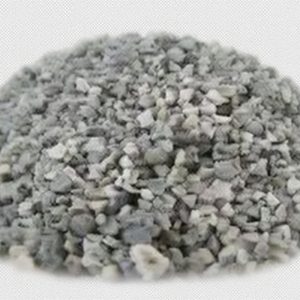A Complete Analysis of the Slag Vertical Mill Grinding Process: The Transformation from Industrial Waste to Green Building Material

Did you know? The mountains of blast furnace slag piled up in steel mills can, after scientific processing, be transformed into the “golden raw material” of high-strength concrete. This is inseparable from the efficient conversion of slag into a slag vertical mill. As a recognized high-quality active admixture in the building materials industry, the resource utilization of slag is leading a green revolution in industrial solid waste recycling.
I. The Core Challenges of Slag Resource Utilization
Slag is a byproduct of the blast furnace ironmaking process. Its high hardness and poor grindability make it difficult to efficiently utilize it using traditional processing methods. Data shows that currently only approximately 15% of slag is directly used as a cement admixture. The majority of the remaining slag is stored for a long time, which not only occupies land but also poses potential environmental risks.
To truly unlock the value of slag, it is necessary to overcome processing difficulties and complete multiple precision processes, including crushing, drying, grinding, classification, and collection. Vertical grinding systems have become the core equipment for solving this problem.
Unlocking the Value of Slag in Five Steps
- Pretreatment
The moisture content of newly discharged slag is as high as 20%. It requires natural airing for 72 hours to reduce the moisture content to below 8%. The three-stage magnetic separation and iron removal equipment used during this stage removes 99.7% of metallic impurities, ensuring stability and equipment safety during subsequent grinding.
- Grinding
The vertical mill is the heart of the entire production line. Its roller limiter design, combined with a 280°C hot air drying process, grinds slag particles 3-5mm in diameter into micron-sized powder.
The innovative hydraulic roller turning device improves maintenance efficiency by 60%.
The daily processing capacity of a single machine can reach 200 tons.
Energy consumption is 35% lower than that of a traditional ball mill.
- Classification
A dynamic classifier is used to flexibly control the fineness of the finished product by adjusting the rotor speed, ensuring consistent powder activity and quality.
- Collection
Equipped with a pulse bag dust collection system, dust emission concentration is consistently controlled below 15mg/m³, far exceeding national environmental protection standards.
- Storage and Transportation
The finished slag powder can be directly transported to the finished product warehouse or packaged into bags for easy transportation and sales.
III. Intelligent Empowerment of Green Production
The slag vertical mill grinding process not only improves solid waste utilization but also significantly reduces carbon emissions. Each production line can reduce carbon dioxide emissions for the steel plant by approximately 23,000 tons annually, transforming it from an “environmental burden” to a “green asset.”
IV. Our Technology and Services
As a professional vertical mill and slag grinding line solution provider, we provide our customers with:
Complete production line design and manufacturing
On-site installation, commissioning, and technical training
Intelligent control system integration
Long-term equipment maintenance and upgrade services
With extensive industry experience and continuous innovation, we help steel and building materials companies achieve efficient resource utilization and green development of industrial solid waste.
Turning slag into waste and creating value through green development.
Contact us to start a new chapter in your slag resource recovery production.


